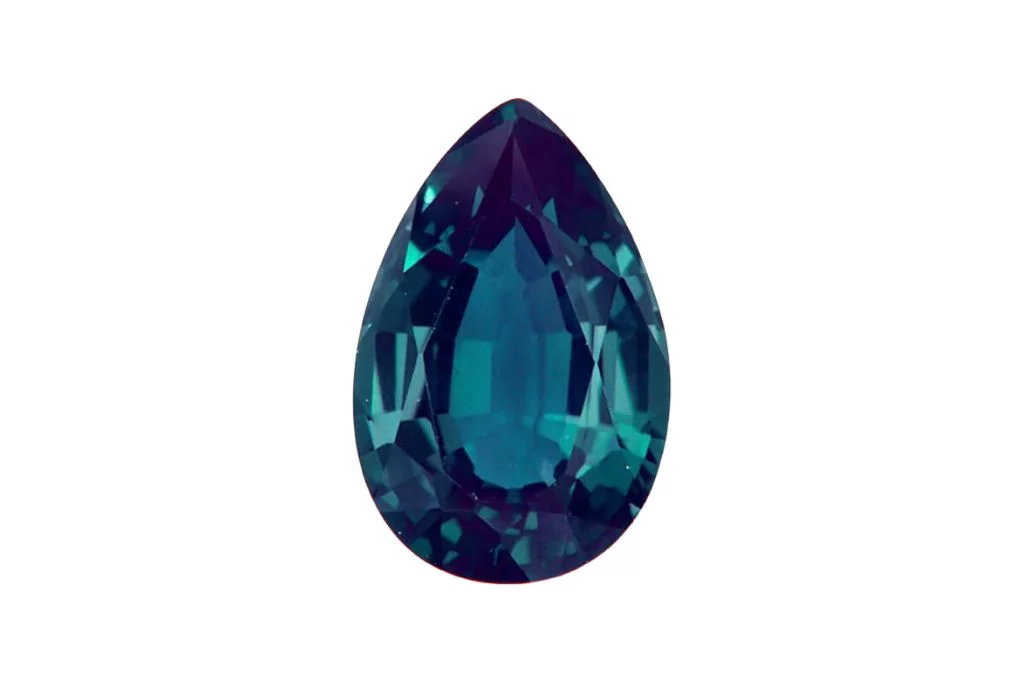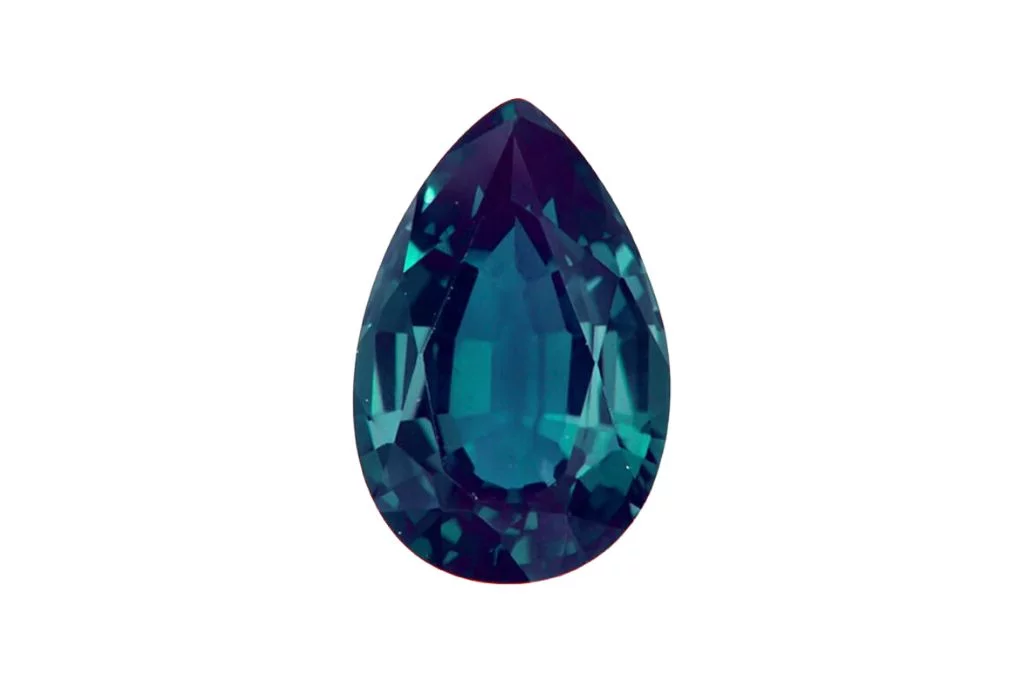Color-Changing Properties
Alexandrite is renowned for its extraordinary color-changing ability, a phenomenon known as the “alexandrite effect.” In daylight or fluorescent light, the gem typically appears as a bluish-green or teal color. However, under incandescent light or candlelight, it transforms into a vibrant purplish-red or raspberry hue. This dramatic shift is what makes alexandrite one of the most fascinating and sought-after gemstones in the world.
Crystal Structure
Alexandrite belongs to the chrysoberyl mineral family and has an orthorhombic crystal system. It forms as tabular or prismatic crystals, often twinned to create pseudo-hexagonal shapes. The gem’s hardness measures 8.5 on the Mohs scale, making it exceptionally durable and suitable for everyday wear in jewelry.
Pleochroism
Another distinctive feature of alexandrite is its strong pleochroism. This optical property causes the gem to display different colors when viewed from different angles. In alexandrite, the pleochroic colors are typically green, red, and orange. This characteristic adds depth and complexity to the stone’s appearance, enhancing its overall beauty and allure.
Inclusions and Clarity
High-quality alexandrite is typically eye-clean, meaning it lacks visible inclusions to the naked eye. However, under magnification, it may reveal various internal features such as needle-like inclusions, liquid feathers, or even color zoning. These inclusions can sometimes create attractive cat’s eye or star effects when the stone is cut en cabochon, further adding to its uniqueness.
Size and Availability
Alexandrite is extremely rare, especially in larger sizes. Most faceted alexandrites on the market weigh less than one carat. Stones over two carats are considered very rare, and those exceeding five carats are exceptionally scarce and highly prized by collectors. The rarity of larger stones contributes significantly to alexandrite’s value and desirability in the gemstone market.
Historical and Cultural Significance of Alexandrite
Alexandrite, discovered in Russia’s Ural Mountains in 1830, was named after Czar Alexander II. It quickly became a symbol of imperial Russia due to its green and red color-changing properties, which matched the country’s military colors. This rare gemstone gained popularity among the Russian aristocracy and was considered a good luck charm.
Metaphysical Associations
In metaphysical circles, alexandrite is believed to be a powerful stone for personal growth and transformation. It is said to strengthen one’s intuition, creativity, and imagination. Many practitioners associate alexandrite with the ability to balance the physical and spiritual realms, promoting harmony between mind, body, and spirit.
Common Uses and Benefits
Alexandrite is primarily used in jewelry, adorning rings, necklaces, and earrings. Its color-changing properties make it a unique and highly sought-after gemstone. Beyond its aesthetic appeal, alexandrite is believed to offer several benefits to its wearers. It is thought to enhance concentration, boost self-esteem, and aid in decision-making processes.
Traditional and Modern Applications
Traditionally, alexandrite has been used as a talisman for good fortune and prosperity. In modern times, it is often employed in crystal healing practices. Some believe that alexandrite can help alleviate stress, promote emotional healing, and enhance one’s ability to learn and absorb new information. It is also associated with the Crown chakra, making it a popular choice for meditation and spiritual practices.


